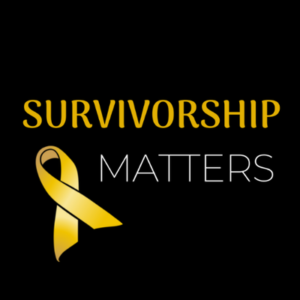Childhood Cancer and Prevention – The Time is Now
 Survivorship Matters Blog By CAC2 Member Mary Beth Collins
Survivorship Matters Blog By CAC2 Member Mary Beth Collins
My introduction to the idea of prevention and childhood cancer didn’t come from a yearning for advocacy and systems change. It also didn’t come years after my son was diagnosed, with a desire to help other parents learn how to nurture healthier environments for their children. It was thrust upon me during my son’s neuroblastoma treatment, by prospective buyers of our house. Somehow, they not only found out that my son was in cancer treatment, but they also found out the type of cancer he had. The couple had researched environmental toxins related to neuroblastoma and demanded testing on the house and its surrounding soil in their purchasing agreement proposal. To sell my house, we were required to do a chlordane test.
Chlordane once was a common pesticide, and as we quickly learned was commonly used in corn fields. Chlordane in the soil was linked to leukemia and neuroblastoma in children, as well as other concerning health effects. Although the EPA prohibited continued use of chlordane effective April 14, 1988, its impact continued for another 20 years. My son was born in 1997. We live in the suburbs outside of Baltimore, MD, where cornfields are commonplace. We had a farm at the end of our block, that in fact did grow corn. Additionally, we had an older house, also a possibility for chlordane usage as it was commonly used for termite control. Suddenly, I was obligated to face the reality that the selection of my home – where I chose to raise my family – may have caused the neuroblastoma in my child. Excruciating doesn’t even begin to describe the feeling of suffocation I had while staring at the envelope that carried the testing results into my kitchen. The realtor was patient with me and let me contemplate the opening of the envelope for what seemed like an eternity, as I mustered enough strength to learn the truth. I almost fell on the floor, collapsing in tears, when she read out loud that the results were negative. I was incredibly grateful to learn we had no traces chlordane on our property, neither in the soil nor our home. No parent should have to endure such agony. But as we document more about childhood cancer clusters, and learn more about environmental toxin vulnerability, it is becoming more of a reality for families.
In today’s neuroblastoma support groups you don’t hear about chlordane, but back in the late 90’s the topic would come up from time to time. And when it would, you would often hear about how to get a test if you wanted to explore it further. Some of them were scams, run by people hungry to take advantage of vulnerable parents terrified for their children. It was hard to ascertain which were valuable options and which were the scammers. Back in 1999, you couldn’t research in the hospital room like you can today. It was more challenging to access such information, and to trust what you could find. With the internet today access to information isn’t a problem, but making sense of the conflicting information presents new questions for parents. How do you determine what to believe? This is the reason why prevention advocacy in childhood cancer is critical, in my opinion: Families need to become more aware of the issues, and know where to turn for trusted information.
PUT_CHARACTERS_HERE
Max Cure Foundation Executive Director Jonathan Agin published a blog discussing childhood cancer prevention in greater detail in July: “In September 2020, the Max Cure Foundation will join others, including other CAC2 members, to release a critical new report that addresses the increase in childhood cancer diagnoses and highlights possible prevention measures. The release of the report culminates more than two years of work and represents the beginning of a more inclusive discussion to put prevention on equal footing with treatment and the ‘cure.’ We hope the forthcoming report opens the discussion of prevention to a wide audience so we can find common ground. This might mean working to create effective strategies that address the issue of chemical exposure as it relates to the diagnosis of childhood cancer. It might also mean creating opportunities for apolitical cross-sector collaboration. We want the community to embrace the call for attention to the prevention of childhood cancer with the same strong and unified voice as it lends to treatment and survivorship issues.” The time is now to pay closer attention to this issue, and how it may help our children and the future health of many children in the years ahead.
Categories
- Blog Posts (91)
- Explainer Post (11)
- Guest Blogs (15)
- Member Blogs (37)
- Survivorship Matters Blog (9)
- CAC2 News (25)
- Collaborative Achievements (13)
- Community News (233)
- In Memoriam (2)
- News Digest (186)
- Webinars (64)
Tags
Recent Posts
- CAC2 Childhood Cancer Community News Digest (July 15-21)
- CAC2 Collaborative Achievement–CAC2 Members Build Framework for Advancing Pediatric Cancer Research and Drug Development
- CAC2 Childhood Cancer Community News Digest (July 8-14)
- CAC2 Childhood Cancer Community News Digest (July 1-7)
- NCI Advocacy Update